Hello, this is a draft created (urgently) for today’s 2pm meetup. It will be revised when the recording is released.
Cynefin?
- Dave Snowden, Wales, rugby, the incomprehensible accent
- CYNEFIN? Si nez fin? Qu’une ne vin? QU’UNE NE VINGT? YES “cunevin” because it’s Welsh and it respects the idea of not being pronounced as it’s written. Gaelic, basically.
- And by the way, it means habitat in Welsh, with the underlying idea: in what place do I find myself and depending on the place where I am, how do I react? How do I decide? How do I communicate? That’s the whole question around Cynefin.
SECI Model
An inspiration? Dave Snowden developed CYNEFIN with others at IBM when he was working in knowledge management (KM). He answered me so quickly “no, there’s no connection” that I can’t help thinking there is one. We find a quadrant, a dynamic, the idea of known and unknown.
https://en.wikipedia.org/wiki/SECI_model_of_knowledge_dimensions
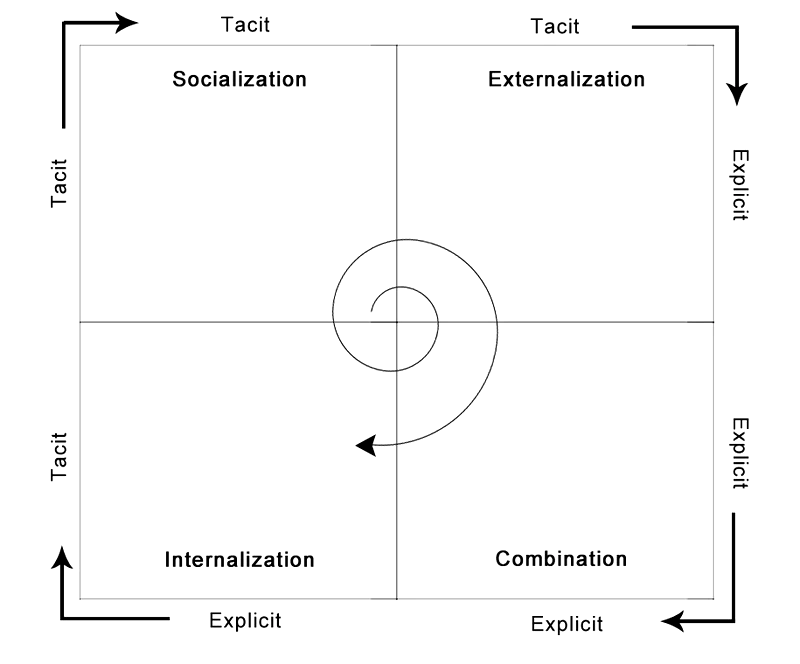
- Tacit to tacit (socialization): Knowledge is there, it happens and is shared informally, socially, through conversations, events, etc.
- Tacit to explicit (externalization): We translate this implicit knowledge into explicit knowledge: a book, a product, etc.
- Explicit to explicit (combination): We aggregate this knowledge, both external and internal, to provoke enrichment.
- Explicit to tacit (internalization): New knowledge, generally provoked by action (learning by doing) emerges, it becomes a force for the organization and returns to individuals. It emerges through the ability to see connections, to see things from a new angle, to make unexpected correlations, etc.
CYNEFIN
I suggest you listen to the meetup, the various visual elements I use or mention are below.
(If you have display problems, the direct link
Dave Snowden’s Cynefin
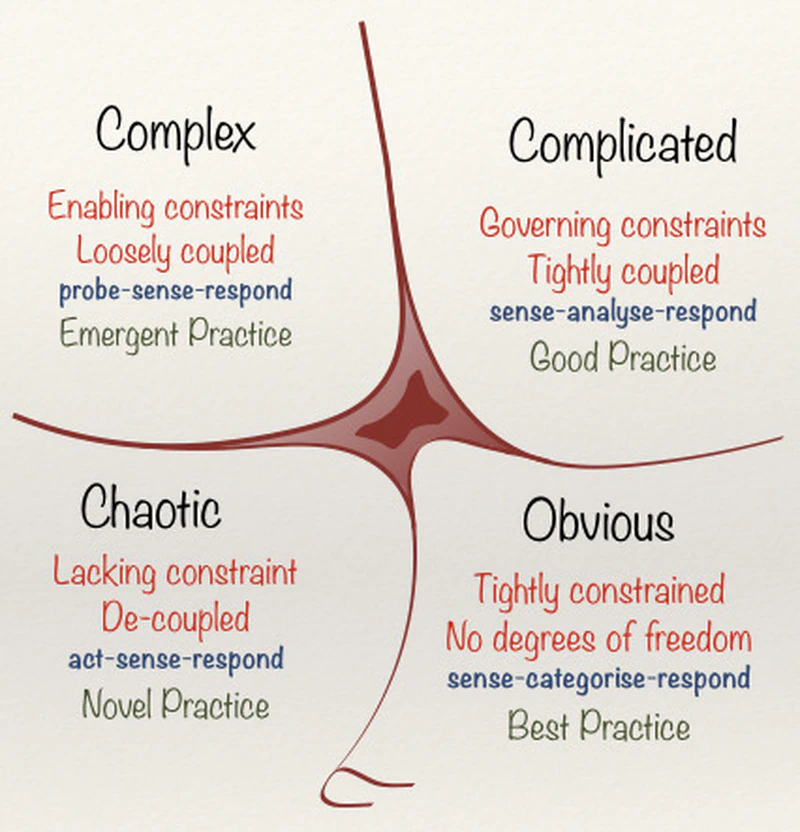
Excerpt from the Cynefin Lego Game by Agile42
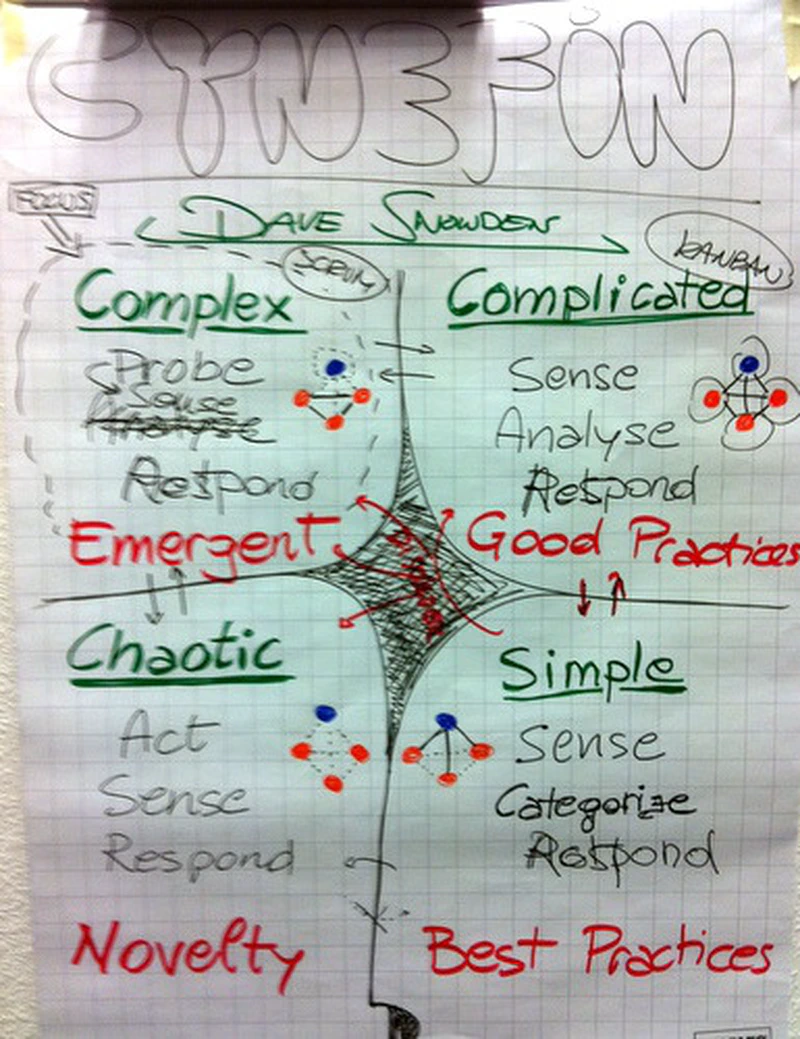
The Main Principles
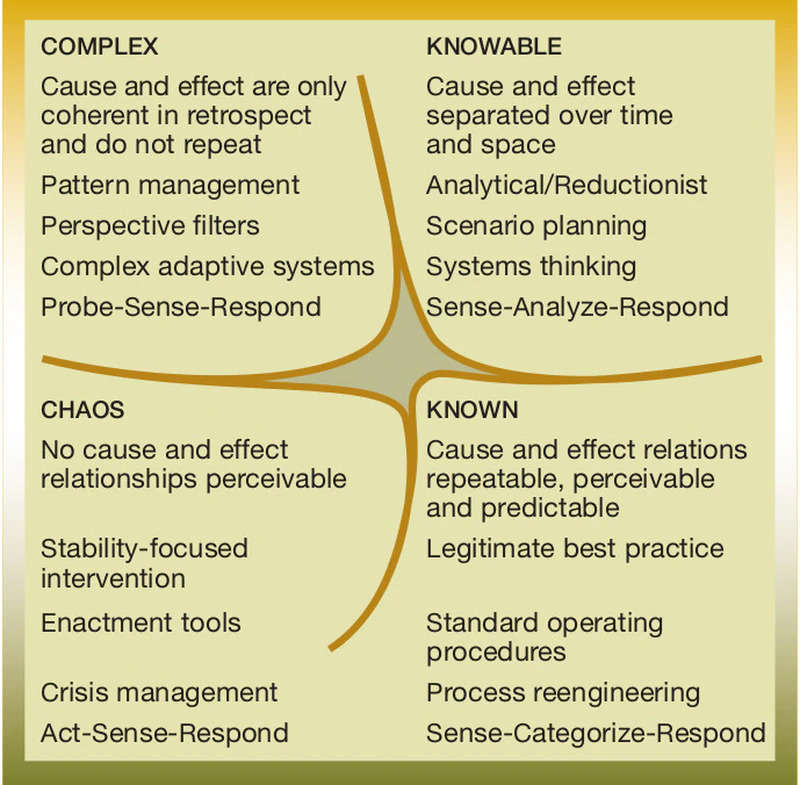 1
1
How Communication Takes Place (weakness or strength of centralization, weakness or strength of distribution)
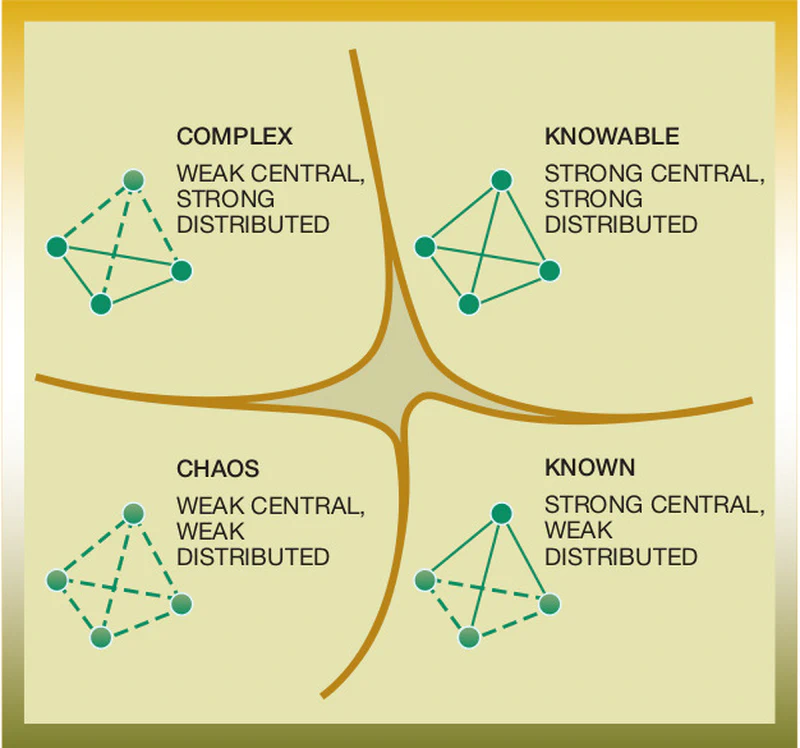
Note the Importance of the Question: are there unknowns? Will we have the answers?
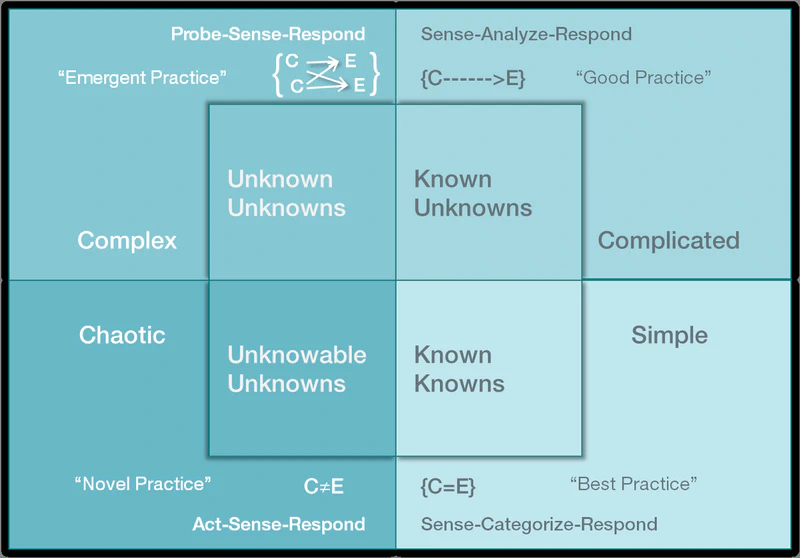
Excerpt from the document indicated at the bottom of the page from the 2007 Harvard Business Review by Snowden & Boone (and translated into French in the article below as well).
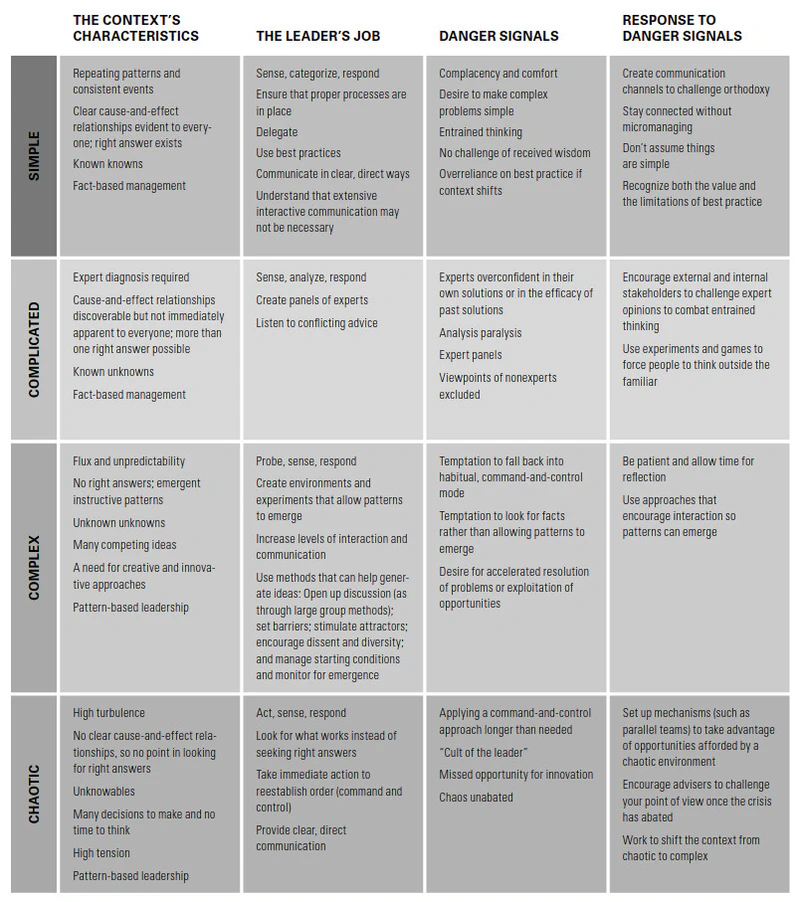
The same table in French here.
CYNEFIN Dynamics
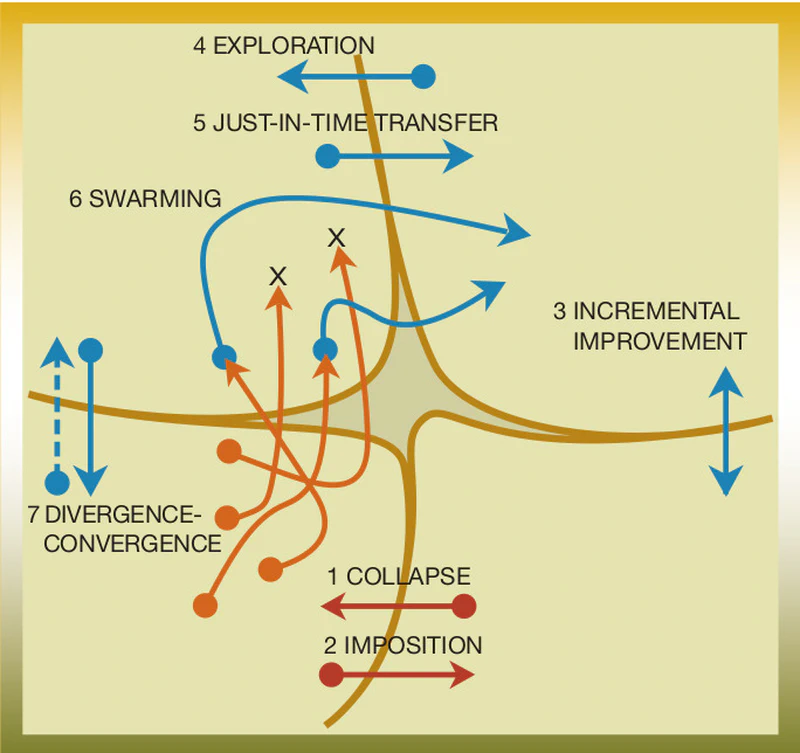
-
Dynamic 1 - “collapse”: when we don’t perceive the organizational change, we risk falling from “simple, obvious” to chaotic. And we fall suddenly, unexpectedly. The more we bury our heads in the sand, the more painful the fall.
-
Dynamic 2 - “imposition”: draconian imposition, very forceful, of a rule and its application. The captain at the helm of his sinking ship. The situation is so catastrophic that people accept what they wouldn’t accept before. Problem: this imposes a more rigid stability than what existed previously. And this can generate a vicious circle with collapse.
-
Dynamic 3 - “incremental improvement”: We improve current practices with expertise that itself improves.
-
Dynamic 4 - “Exploration”: We often remove a control point, we allow a lot of trust, and we try to make new ways of doing things emerge.
-
Dynamic 5 - “Just In time or Exploitation”: We decide to implement the new emerging practices in a predictable way, at the right time, not too early, not too late.
-
Dynamic 6 - “Swarming”: When the exit from chaos happens through large groups in an emergent way (as opposed to the command and control of imposition). We observe which “attractor” attracts the group, which point makes a dynamic emerge.
-
Dynamic 7 - “Divergence - Convergence”: A way to energize emergence. For many organizations in the complex domain, going back and forth into chaos is much easier than moving into the complicated and can prove enriching.
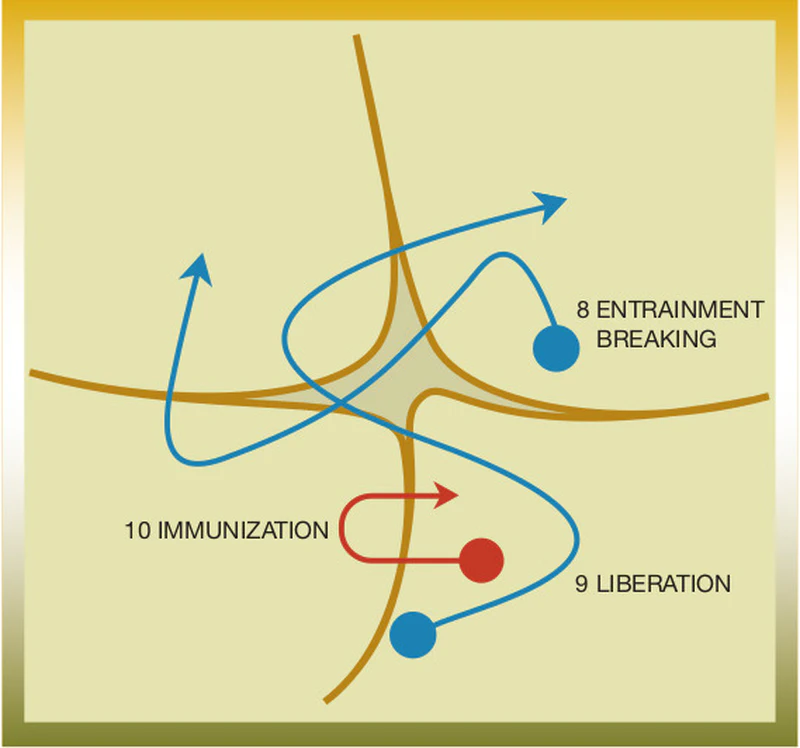
-
Dynamic 8 - “Entrainment breaking”: Periodically we deliberately switch into chaos to observe if new ways of doing things emerge.
-
Dynamic 9 - “Liberation”: The organization tries to see if it can invent new systems. Moving into the complex must bring many crossings and mixtures to favor this emergence.
-
Dynamic 10 - “Immunization”: We shake up our habits temporarily to see if they resist.
My Sources
- This article from 2013: Cynefin et son lego game
- This document by Snowden & Boone
- This document by Snowden & Kurtz